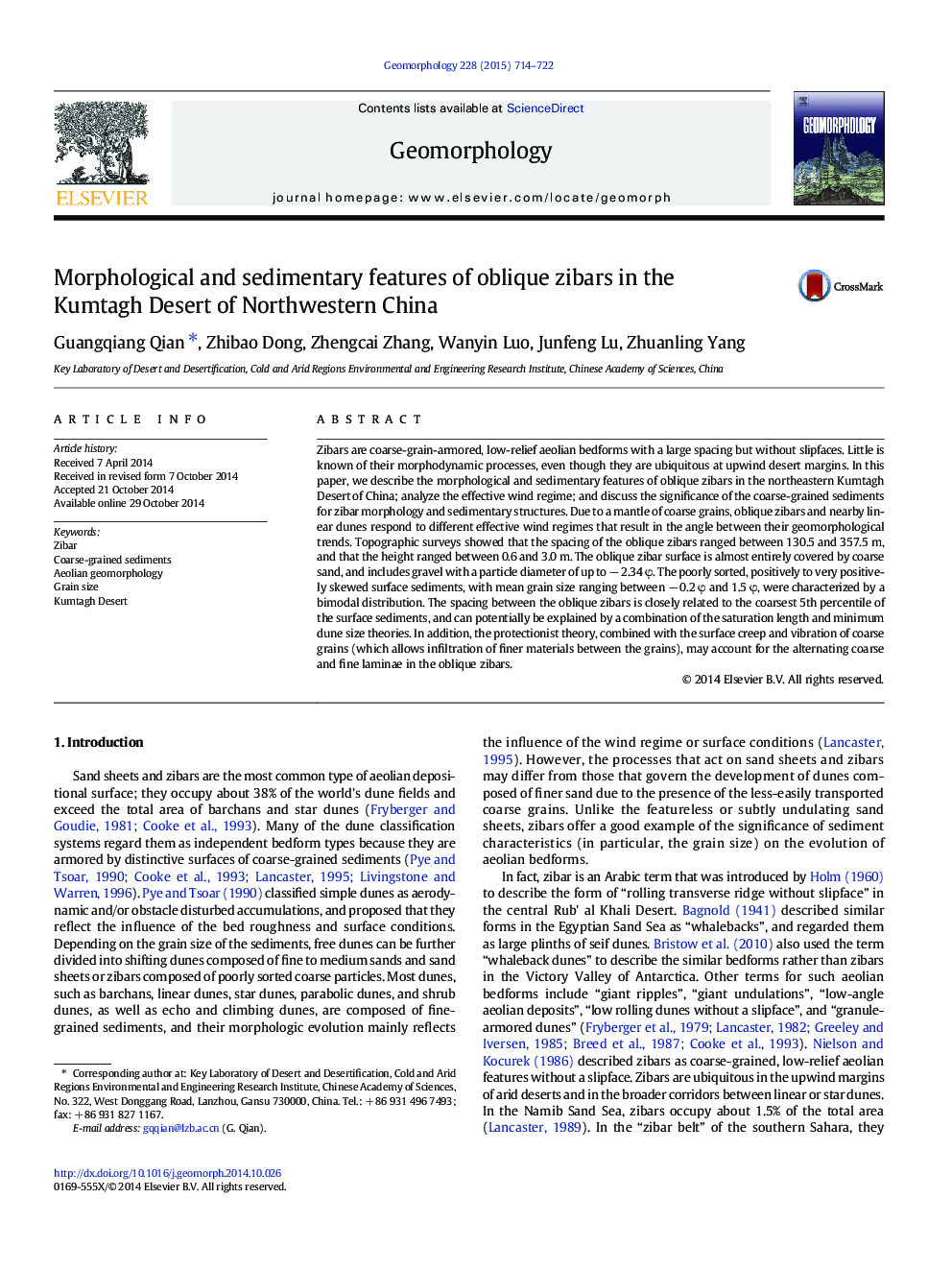| Article ID | Journal | Published Year | Pages | File Type |
|---|---|---|---|---|
| 6432335 | Geomorphology | 2015 | 9 Pages |
â¢The morphology and the surface grain size of oblique zibar dunes are described.â¢Internal deposits and sedimentary structures of zibars are investigated.â¢Zibars and nearby linear dunes respond to different effective wind regimes.â¢Zibar spacing depends on the coarsest 5th percentile of the sediments.
Zibars are coarse-grain-armored, low-relief aeolian bedforms with a large spacing but without slipfaces. Little is known of their morphodynamic processes, even though they are ubiquitous at upwind desert margins. In this paper, we describe the morphological and sedimentary features of oblique zibars in the northeastern Kumtagh Desert of China; analyze the effective wind regime; and discuss the significance of the coarse-grained sediments for zibar morphology and sedimentary structures. Due to a mantle of coarse grains, oblique zibars and nearby linear dunes respond to different effective wind regimes that result in the angle between their geomorphological trends. Topographic surveys showed that the spacing of the oblique zibars ranged between 130.5 and 357.5 m, and that the height ranged between 0.6 and 3.0 m. The oblique zibar surface is almost entirely covered by coarse sand, and includes gravel with a particle diameter of up to â 2.34 Ï. The poorly sorted, positively to very positively skewed surface sediments, with mean grain size ranging between â 0.2Â Ï and 1.5 Ï, were characterized by a bimodal distribution. The spacing between the oblique zibars is closely related to the coarsest 5th percentile of the surface sediments, and can potentially be explained by a combination of the saturation length and minimum dune size theories. In addition, the protectionist theory, combined with the surface creep and vibration of coarse grains (which allows infiltration of finer materials between the grains), may account for the alternating coarse and fine laminae in the oblique zibars.
